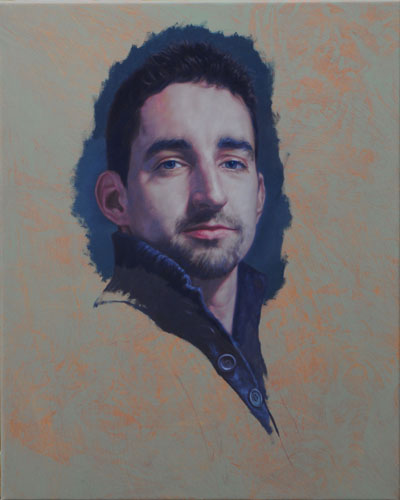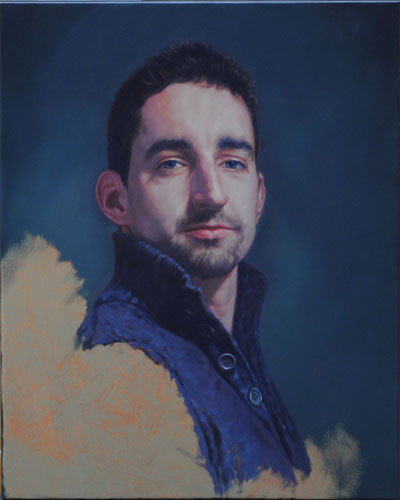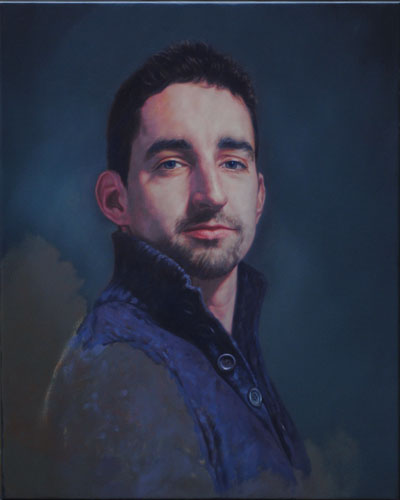Oil Portrait technique painted alla prima according to a photography
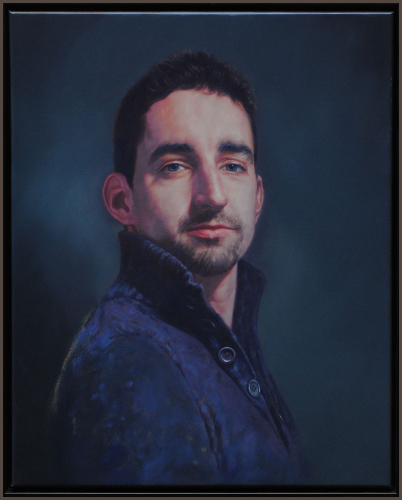
Julien, oil, 20 x 16 in
This portrait of Julien was painted alla prima in 2 consecutives days.
For this kind of head-and-shoulders portrait, I spread out my work almost always on two days. Knowing my capacities, I know that the total work is too important to be realized in the single day.
Painting with a resinous medium involves fundamental rules. What was painted a day cannot, in no way, be retouched the next day at the risk of causing a blur (the average waiting time to respect between repeats is two weeks).
That is why I have to divide in advance my work into two very distinct zones and proceed systematically by resisting the temptation to extend beyond. This process involves a solid preparation before even applying the first brushstroke. It is necessary to visualize our work in time and have studied well the range of values and colors that will be needed.
If this discipline bugs you, the French half-paste technique is not for you. I think it explains why so few artistes explore it.
TECHNIQUE (Painting according to photography*) :
The first day, I focused on the most important part of the work, the face. My goal being to paint alla prima, and knowing that I won’t be able to come back on the same segment the next day, I have to give my full potential since the result will be final. So I spent about 12 hours perfecting the rendering.
The second day, with a new energy, I was able to complete the work in six hours.
Total time production: 18 hours. Of course including breaks for eating, napping and some other necessities…
THE PALETTE – range of departure :

NB. The illustrated palette here is presented as an example and is not the one which served to paint Julien.
From the basic colors, I prepared in advance an appropriate range to paint the entire work, as much as for the flesh, clothing and background, making sure to prepare a sufficient quantity of each color according to surface to be covered.
The range is to prepare in advance and with accuracy the colors that will be needed to paint in shades and lights all the volumes, and this in gradation of the most progressive chromatic values as possible.
Of course, it will be necessary to adjust the range in the progression and elaborate many small complementary shades. But the preparation of the range enables to conceive consistency for the whole work and focus my energy to paint instead of seeking my colors in the course of the work.
THE WORK:
Day 1:
First of all, using a cardboard, I transferred the drawing on the medium, taking all the precautions to compose correctly.
Then, I confirmed the drawing by means of a red oxide of average value, and began to apply the colors I had prepared on each appropriate area, from shadows to light. The aim is to cover the surface in about 1 ½ hours.


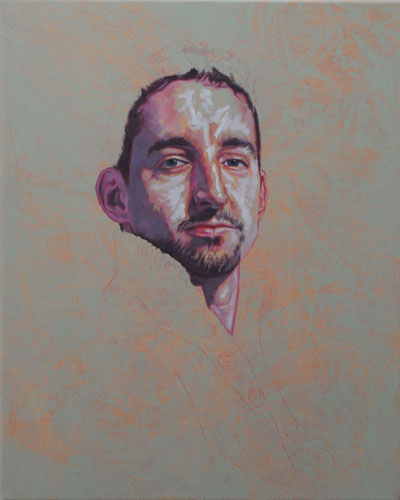
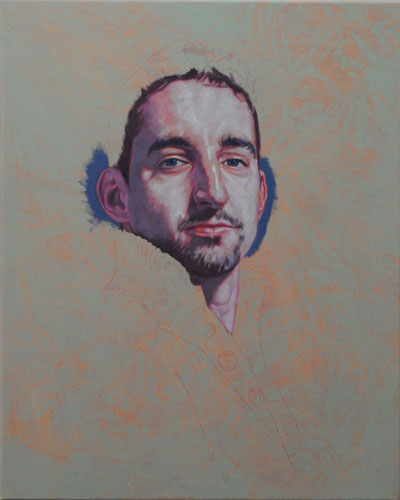
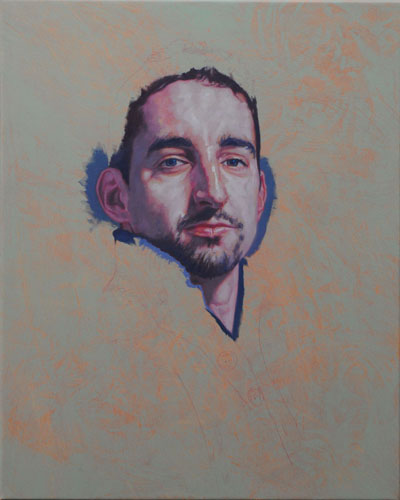
Then I spent the whole day in refining the rendering, redoing each parts several times, taking advantage of the progressive plasticity of the medium, which allows glazes in fresh even after a few hours. I paid special attention to build the transitions between the subject and the background, the fabric and the hair, as to control the accuracy or softness of the transitions.
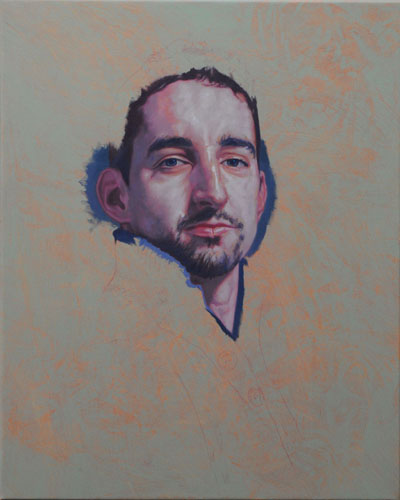

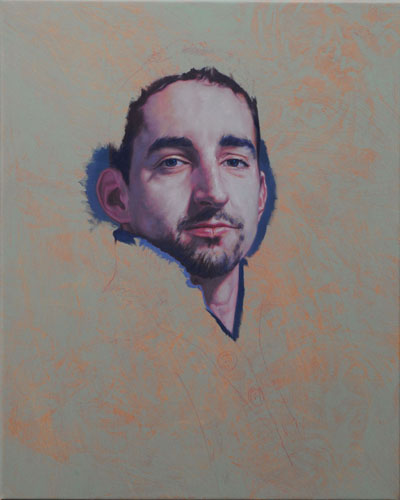
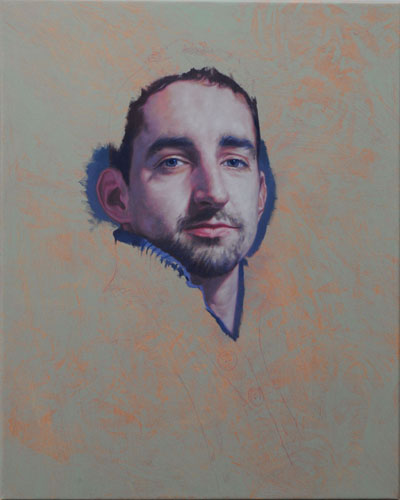

At the end of the day, I enlarged a little the transition around the subject to be sure that the next day, I was going to be able to continue the work in the fresh avoiding blur.
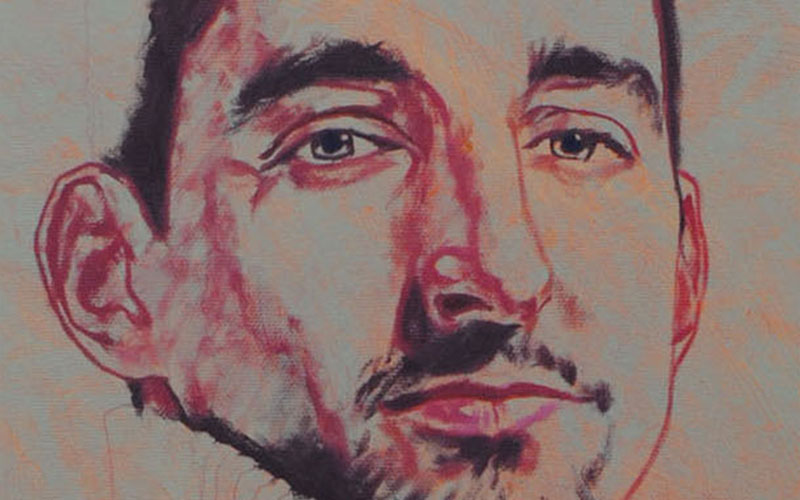
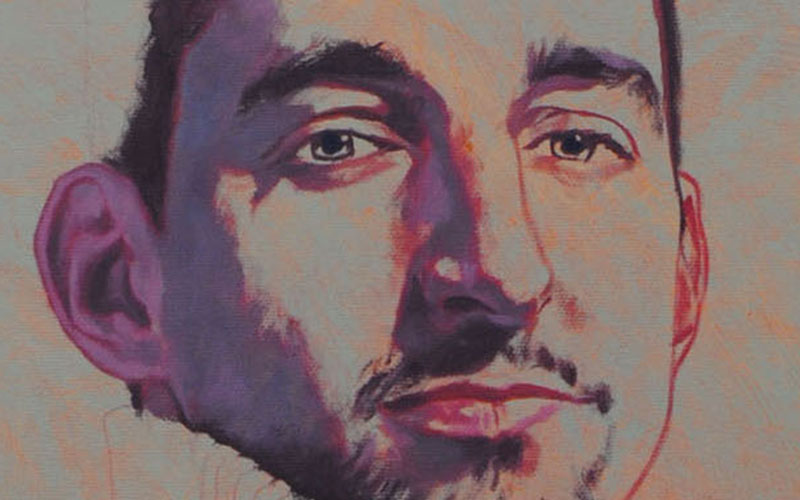
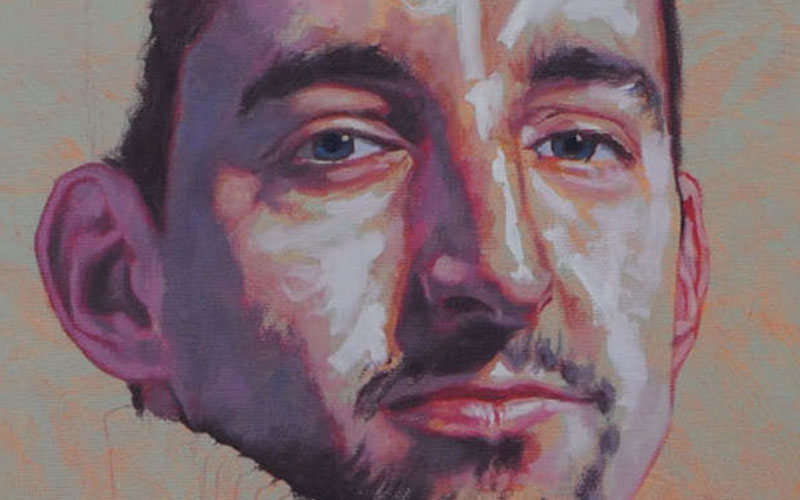
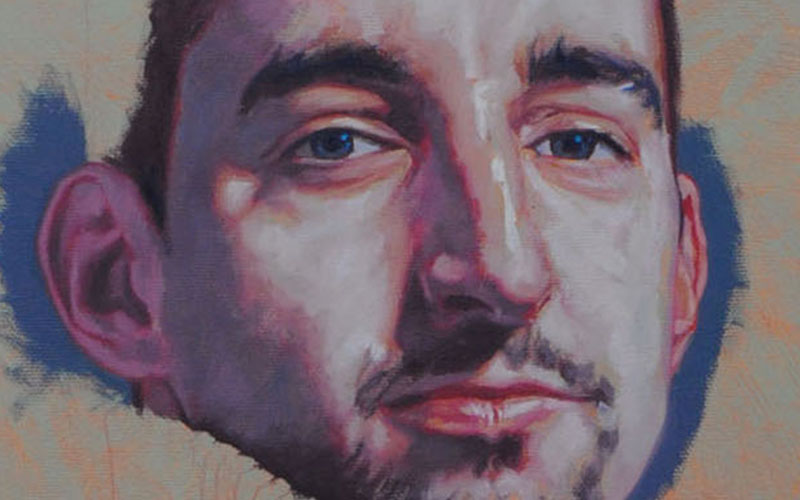
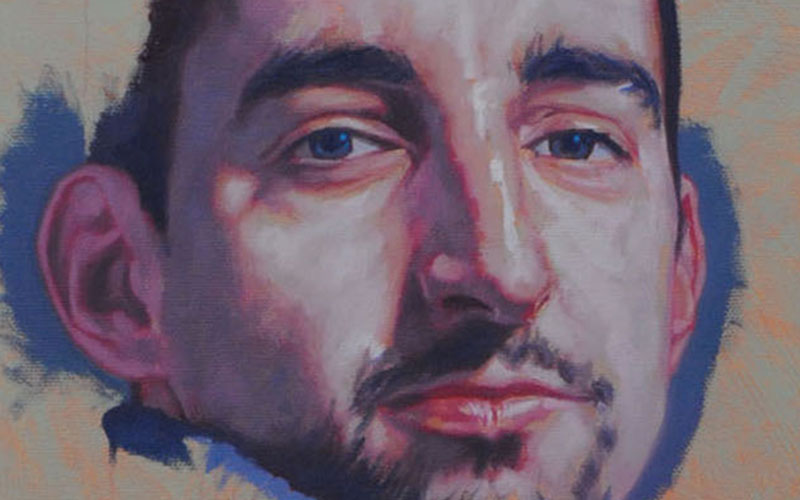
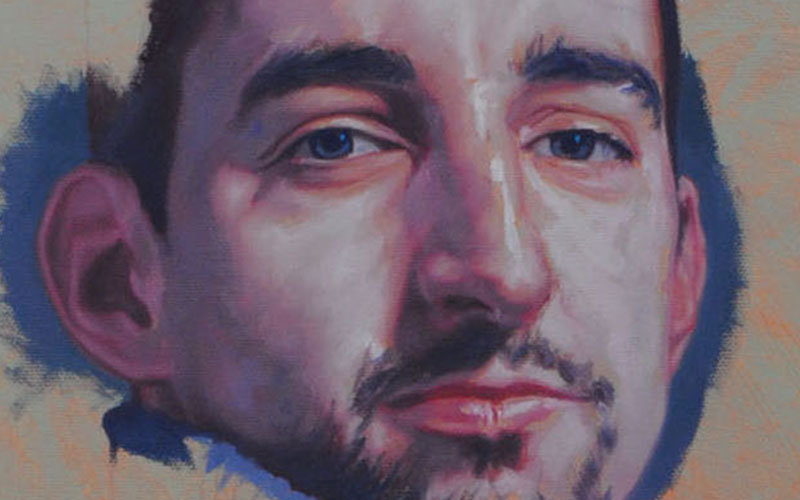
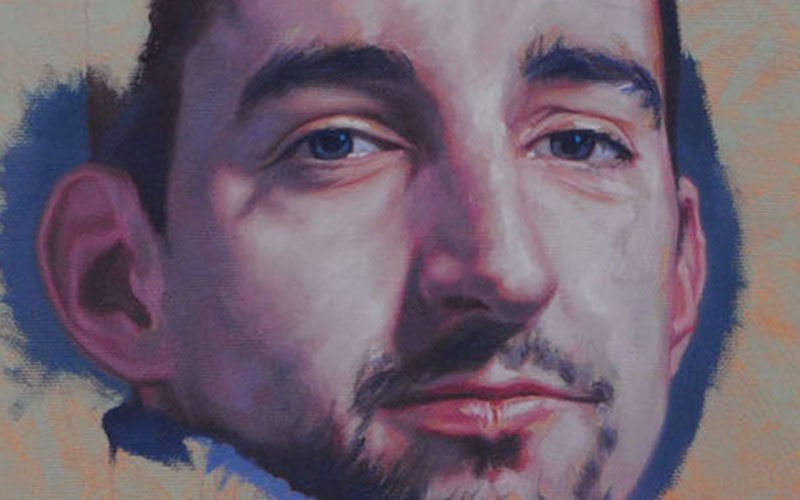


Day 2:
Very important, I started out by extending the transition prepared the day before at the end of the session. It is urgent to act before that part becomes too stuck.


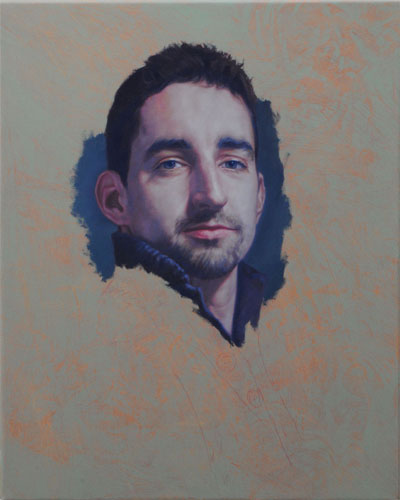
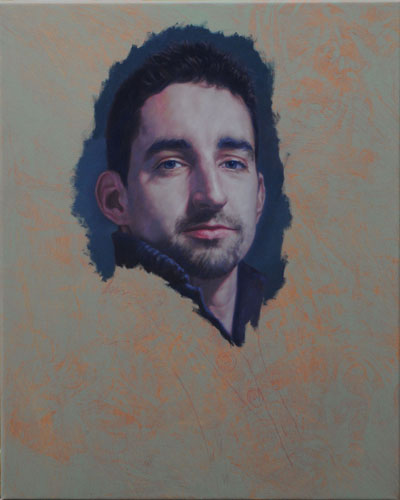
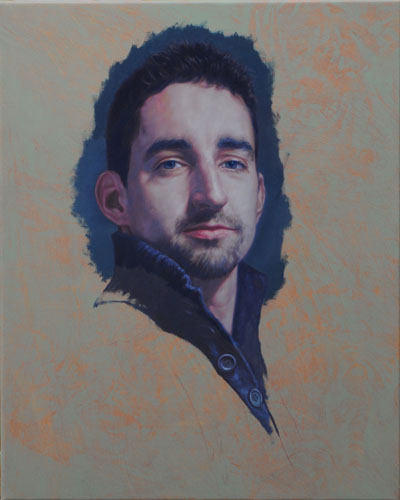
Then, I had the whole day to finish the work.
